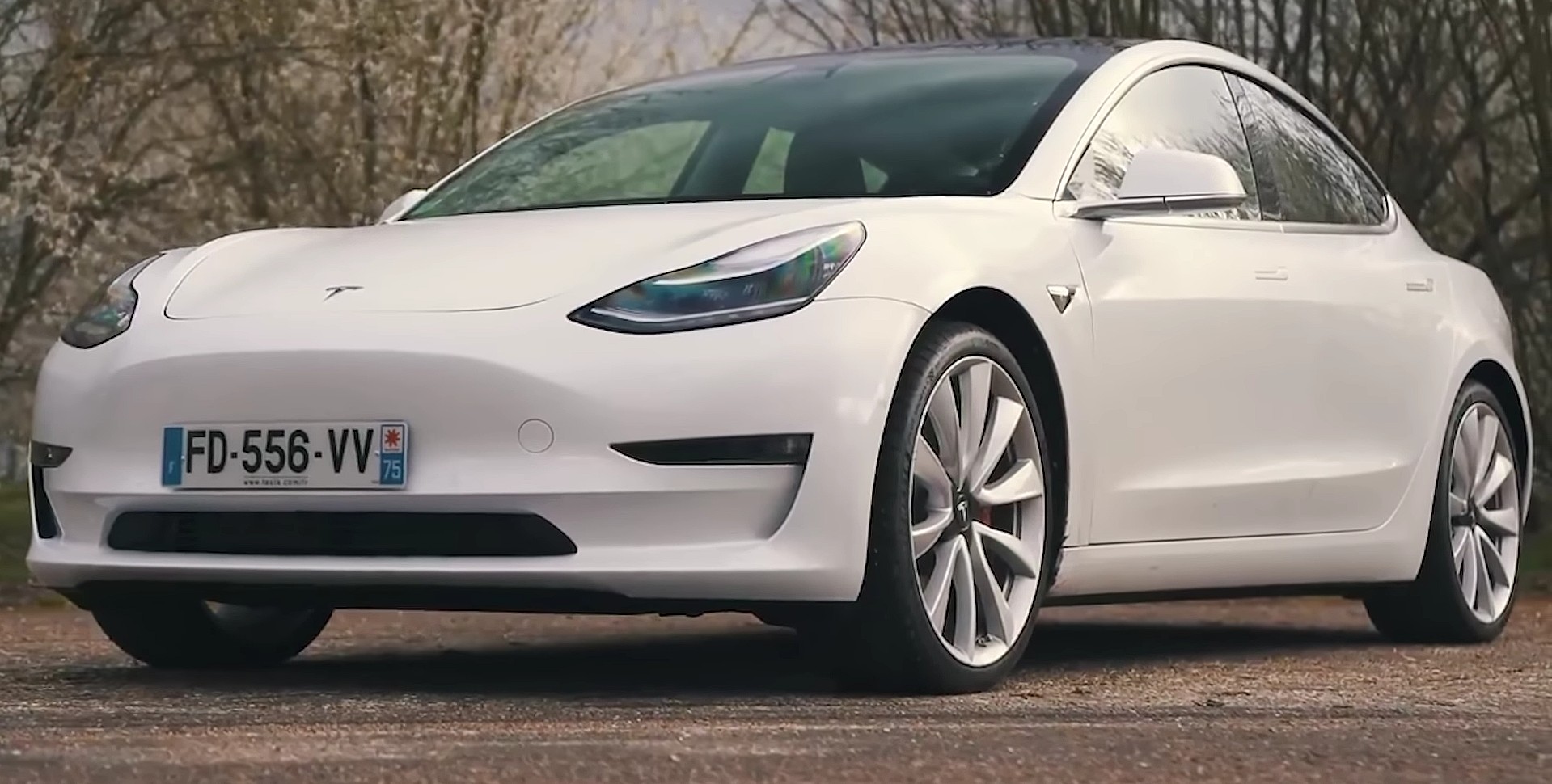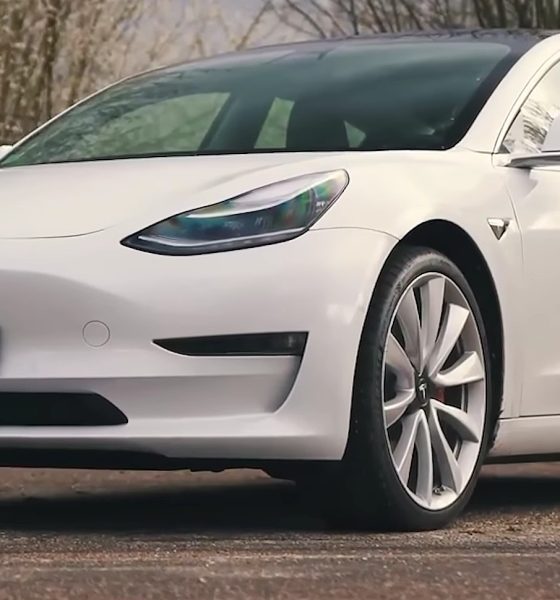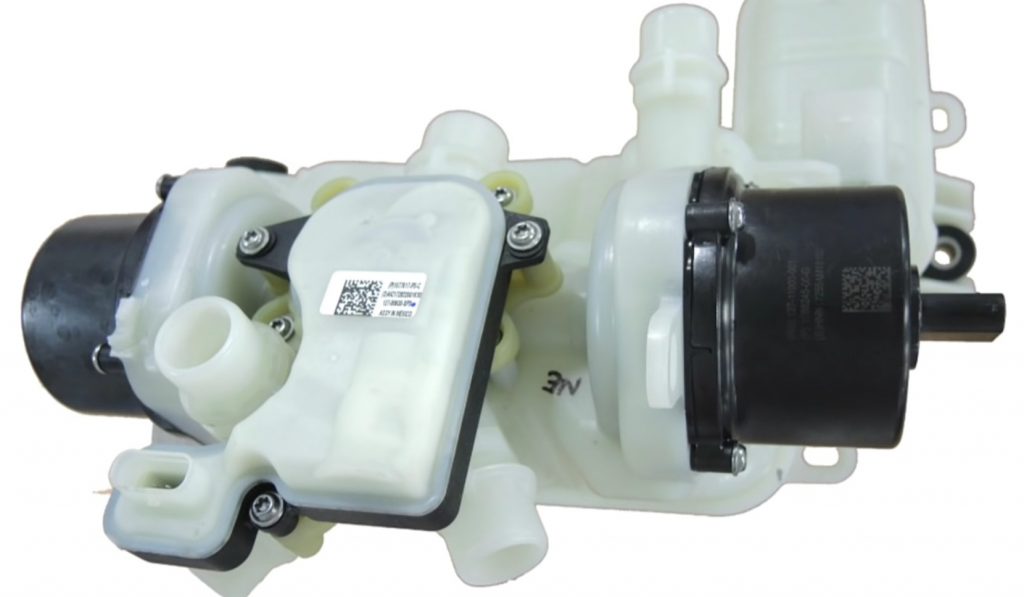

News
Tesla ‘Superbottle’ proves that the Model 3’s disruption lies in its vertical integration
During a recent interview with Tesla owner-enthusiast Sean Mitchell, Detroit veteran Sandy Munro of Munro and Associates mentioned that among the Model 3’s unique components, its “Superbottle” is one of the most innovative. Combining two pumps, one heat exchanger, and one coolant valve in one cleverly-designed bottle, the Model 3’s cooling system is arguably the most unique in the auto industry.
The traditional automotive industry is all about suppliers and outsourcing the different components of a vehicle to different companies. This results in cars having redundant components. The Chevy Bolt, for example, has three cooling systems: one for its battery pack, one for its cabin, and one for its electronics. This is not the case with the Model 3, as the fondly-named Superbottle handles the entire cooling system of the whole vehicle — battery pack, cabin, and electronics included.
The Superbottle has garnered much recognition even among noted gearheads such as Jalopnik‘s David Tracy, who used to design automotive cooling systems himself. Munro, for his part, noted that the Superbottle actually gives several advantages for Tesla, such as increased modularity and packaging space, potential weight savings, reduced final assembly costs, and reduced final assembly time, to name a few. For Munro, the novel cooling system is the very definition of Tesla’s vertical integration.

“The Superbottle is a great example of how the normal automotive companies don’t work together, and Tesla does. That Superbottle crosses many lines that you can’t cross here (in Detroit). If I’m in charge of engine cooling or battery cooling, I don’t want nothing to do with cooling the cabin. And yet, we’ve got the motor cooling, the battery cooling, and electronics, all going through one little bottle that’s got some clever little ball valves that open and close to make sure that everything’s getting heated or everything’s being cooled to where it needs to be. We all thought that was the best thing in the whole damn car,” Munro fondly commented.
Discussing the Superbottle further, Munro mentioned how the cooling system is fitted with a bottle avatar dressed as a superhero. According to the auto veteran, this funny little character is a notable representation of just how different Tesla is as a car maker, as such fun Easter Eggs in a vehicle will never be allowed in traditional automakers. Together with the vertical integration that is showcased in the Superbottle, Tesla’s apparent support for creativity among its engineers and designers is something that is simply not present in traditional automakers today.
In a recent video, Tesla investor-enthusiast Galileo Russell of HyperChange TV noted that innovations such as the Superbottle could open the doors for the electric car maker’s other products. It is most certain that the Superbottle will end up in the Model Y, and variations of it would likely be used in other vehicles such as the Pickup Truck, the Semi, and the next-gen Roadster. Perhaps, Russell mused, Tesla’s Superbottle solution could even be utilized on the company’s upcoming HVAC products, which Elon Musk hinted at during his extensive podcast with Joe Rogan last year.
Tesla catches a lot of flak due to the fact that the company and its CEO, Elon Musk, seems unwaveringly intent on reinventing the wheel. With each new vehicle that it introduces, Tesla steps farther and farther away from traditional automakers. This is represented by the fact that the company is currently developing a literal giant casting machine for its Model Y crossover, which is expected to reduce the number of parts for the vehicle. And this is just the tip of the iceberg, as Tesla is also developing its custom Silicon for its full self-driving projects. It is then no surprise that when Sandy Munro was discussing how traditional automakers are playing catchup to Tesla in the EV market, he noted that “really and truly, all the domestics (automakers such as Ford and GM) are way behind.”

News
Tesla FSD fleet is nearing 7 billion total miles, including 2.5 billion city miles
As can be seen on Tesla’s official FSD webpage, vehicles equipped with the system have now navigated over 6.99 billion miles.

Tesla’s Full Self-Driving (Supervised) fleet is closing in on almost 7 billion total miles driven, as per data posted by the company on its official FSD webpage.
These figures hint at the massive scale of data fueling Tesla’s rapid FSD improvements, which have been quite notable as of late.
FSD mileage milestones
As can be seen on Tesla’s official FSD webpage, vehicles equipped with the system have now navigated over 6.99 billion miles. Tesla owner and avid FSD tester Whole Mars Catalog also shared a screenshot indicating that from the nearly 7 billion miles traveled by the FSD fleet, more than 2.5 billion miles were driven inside cities.
City miles are particularly valuable for complex urban scenarios like unprotected turns, pedestrian interactions, and traffic lights. This is also the difference-maker for FSD, as only complex solutions, such as Waymo’s self-driving taxis, operate similarly on inner-city streets. And even then, incidents such as the San Francisco blackouts have proven challenging for sensor-rich vehicles like Waymos.
Tesla’s data edge
Tesla has a number of advantages in the autonomous vehicle sector, one of which is the size of its fleet and the number of vehicles training FSD on real-world roads. Tesla’s nearly 7 billion FSD miles then allow the company to roll out updates that make its vehicles behave like they are being driven by experienced drivers, even if they are operating on their own.
So notable are Tesla’s improvements to FSD that NVIDIA Director of Robotics Jim Fan, after experiencing FSD v14, noted that the system is the first AI that passes what he described as a “Physical Turing Test.”
“Despite knowing exactly how robot learning works, I still find it magical watching the steering wheel turn by itself. First it feels surreal, next it becomes routine. Then, like the smartphone, taking it away actively hurts. This is how humanity gets rewired and glued to god-like technologies,” Fan wrote in a post on X.
News
Tesla starts showing how FSD will change lives in Europe
Local officials tested the system on narrow country roads and were impressed by FSD’s smooth, human-like driving, with some calling the service a game-changer for everyday life in areas that are far from urban centers.

Tesla has launched Europe’s first public shuttle service using Full Self-Driving (Supervised) in the rural Eifelkreis Bitburg-Prüm region of Germany, demonstrating how the technology can restore independence and mobility for people who struggle with limited transport options.
Local officials tested the system on narrow country roads and were impressed by FSD’s smooth, human-like driving, with some calling the service a game-changer for everyday life in areas that are far from urban centers.
Officials see real impact on rural residents
Arzfeld Mayor Johannes Kuhl and District Administrator Andreas Kruppert personally tested the Tesla shuttle service. This allowed them to see just how well FSD navigated winding lanes and rural roads confidently. Kruppert said, “Autonomous driving sounds like science fiction to many, but we simply see here that it works totally well in rural regions too.” Kuhl, for his part, also noted that FSD “feels like a very experienced driver.”
The pilot complements the area’s “Citizen Bus” program, which provides on-demand rides for elderly residents who can no longer drive themselves. Tesla Europe shared a video of a demonstration of the service, highlighting how FSD gives people their freedom back, even in places where public transport is not as prevalent.
What the Ministry for Economic Affairs and Transport says
Rhineland-Palatinate’s Minister Daniela Schmitt supported the project, praising the collaboration that made this “first of its kind in Europe” possible. As per the ministry, the rural rollout for the service shows FSD’s potential beyond major cities, and it delivers tangible benefits like grocery runs, doctor visits, and social connections for isolated residents.
“Reliable and flexible mobility is especially vital in rural areas. With the launch of a shuttle service using self-driving vehicles (FSD supervised) by Tesla in the Eifelkreis Bitburg-Prüm, an innovative pilot project is now getting underway that complements local community bus services. It is the first project of its kind in Europe.
“The result is a real gain for rural mobility: greater accessibility, more flexibility and tangible benefits for everyday life. A strong signal for innovation, cooperation and future-oriented mobility beyond urban centers,” the ministry wrote in a LinkedIn post.
News
Tesla China quietly posts Robotaxi-related job listing
Tesla China is currently seeking a Low Voltage Electrical Engineer to work on circuit board design for the company’s autonomous vehicles.

Tesla has posted a new job listing in Shanghai explicitly tied to its Robotaxi program, fueling speculation that the company is preparing to launch its dedicated autonomous ride-hailing service in China.
As noted in the listing, Tesla China is currently seeking a Low Voltage Electrical Engineer to work on circuit board design for the company’s autonomous vehicles.
Robotaxi-specific role
The listing, which was shared on social media platform X by industry watcher @tslaming, suggested that Tesla China is looking to fill the role urgently. The job listing itself specifically mentions that the person hired for the role will be working on the Low Voltage Hardware team, which would design the circuit boards that would serve as the nervous system of the Robotaxi.
Key tasks for the role, as indicated in the job listing, include collaboration with PCB layout, firmware, mechanical, program management, and validation teams, among other responsibilities. The role is based in Shanghai.
China Robotaxi launch
China represents a massive potential market for robotaxis, with its dense urban centers and supportive policies in select cities. Tesla has limited permission to roll out FSD in the country, though despite this, its vehicles have been hailed as among the best in the market when it comes to autonomous features. So far, at least, it appears that China supports Tesla’s FSD and Robotaxi rollout.
This was hinted at in November, when Tesla brought the Cybercab to the 8th China International Import Expo (CIIE) in Shanghai, marking the first time that the autonomous two-seater was brought to the Asia-Pacific region. The vehicle, despite not having a release date in China, received a significant amount of interest among the event’s attendees.








